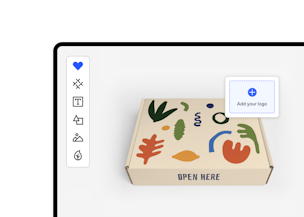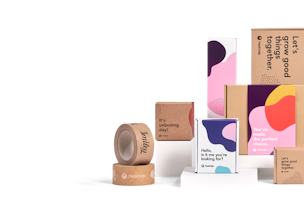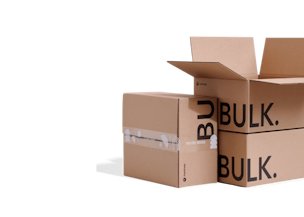Your Complete Guide to Creating a B2B Social Media Strategy

Subscribe to stay updated
You're now subscribed!


B2B social media can be a hard nut to crack. Creating the right content on the right platform to get leads isn't easy. But a good way to start is by developing the right B2B Social Media Strategy for your brand. Read how ...
Once upon a time, the streams of the freewheeling social media world and the seriousness of high-stakes B2B marketing didn’t cross.
But as we approach 2021, it’s safe to say that those days are ancient history – and both social media and B2B marketing now co-exist.
The B2B buyer’s journey can be long and convoluted, and now it often ventures into the social media landscape.
LinkedIn alone generates 80% of social media B2B leads these days.
75% of B2B buyers research their purchases on social media.
The buyer’s journey has changed, and it’s not just about pure lead generation and traffic any more. Social media has become the key to demand generation.
What is demand generation? Driven by data, demand generation is a marketing strategy focused on building awareness and interest in your product, service or brand in general.
Many B2B companies know they have a product or service that can solve problems for lots of businesses.
The difficulty is that many businesses need to be educated about the nature of the problem before they’ll even begin to start considering purchases to help them solve it.
On social media, you can reach a wide range of potential buyers with attention-grabbing content that generates demand and ushers them into the top of your sales funnel.
Why You Need a B2B Social Media Strategy
If you’re using social media to generate demand and find B2B leads, what are the leads you want?
You’re looking for VPs and C-suite executives at the companies who need your product – and those individuals are on social media for their own varied reasons.
The challenge for you is to get your content showing up on their screens.

If you go in without a plan, your brilliant social media posts might accomplish nothing more than entertaining a bunch of people who will never end up buying from you.
When you know exactly what you’re trying to achieve by venturing into social media, you can set specific goals for your campaign.
Then you can develop a strategy that ties your goals to the social media activity your leads are actually engaging with.
Without a documented, goal-focused B2B social media strategy, you can end up chasing meaningless metrics and putting out the wrong kind of content.
Many social media campaigns fall victim to common missteps like these:
- Using a social media “voice” that doesn’t fit with your brand
- Turning viewers off with content that looks and feels like advertising
- Posting the same content everywhere, ignoring each platform’s unique qualities
- Generating lots of social media buzz without having in-depth content to maintain engagement
- Going after a high follower count over fewer, higher quality followers
Defining a strategy will help you avoid these errors.
How to Create Your B2B Social Media Strategy
It doesn’t take a bolt of inspiration from the heavens to come up with a successful B2B social media strategy. The best solution is to break it down into a step-by-step process.
- Set your goals. Are you going for demand generation? Lead generation? Increasing brand awareness? These objectives will shape the tone and content of your campaign.
- Define your target audience. Creating a buyer persona can help you decide how to tailor your messaging, where to advertise, and which social conversations to engage in.
- Select your social platforms. Many B2B companies use LinkedIn to attract new prospects. However, LinkedIn leads generation is super hard to execute but potent when done right.
- Determine what type of content to publish. What kind of content fits your campaign? Is it video? Infographics? Whitepapers? Employee advocacy? It all depends on your audience, your goals, and the platforms you’ve chosen.
- Choose the social media metrics you’ll use to measure your efforts. To know if you’re succeeding, the KPIs you’re measuring must directly relate to the goals you’ve established.
- Research your competition. What are competing brands doing on social media? Do they have a strong, established presence? Can you tell what is or isn’t working for them?
- Create and use a consistent brand voice. Develop a recognizable, consistent tone and personality in your posts. Don’t be bland, generic, and forgettable. Humour is fine, but know your audience’s limits.
- Set up a social media calendar. When you get your audience hungry for content, you don’t want to lose them by running out of things to say. A calendar can keep you on track to deliver varied content on a consistent schedule.
- Automate posting, monitoring, and reporting. The right tools can take a lot of the manual busywork out of social media management – saving you time, money, and stress.
- Engage your audience. Remember, your social media audience isn’t there to passively consume content. They want to talk back, ask and answer questions, and feel like they’re part of the conversation.
How is B2B Social Different from B2C Social?
B2B and B2C buyers have completely different motivations and expectations, and B2C campaigns often have very different goals.
B2C social media marketing often focuses on brand awareness, web traffic, and getting content to go viral to a huge audience.
The whitepapers and in-depth blog posts that can move the needle for B2B buyers would be useless in such a campaign.
Conversely, B2B social media marketing is more focused on generating leads, demand, and brand development.
A humorous B2C cat video wouldn't be too helpful in this context. To be successful, B2B marketers need to build strategies with their specific goals and audience in mind from the outset.

What Social Media Platforms Should You Choose?
Any time you talk about B2B and social media marketing, LinkedIn is going to dominate the conversation, and for good reason – it’s where the leads are.
More than 9 out of 10 B2B marketers leverage LinkedIn over any other social media network. 79% of them consider LinkedIn to be an effective source for generating new leads.
Luckily, the process of LinkedIn lead generation can be automated, allowing businesses to streamline their efforts and save valuable time and resources.
That doesn’t mean you can focus on LinkedIn and ignore the other platforms.
They each have unique advantages and can be a cost-effective way to reach audiences who are less likely to engage on LinkedIn. You may even be able to gain an advantage on platforms that your competitors are overlooking.
- Facebook, still the biggest social network on the planet, offers powerful features for building and engaging a following with Facebook Groups.
- Twitter can be great for tapping into timely conversations about world events and industry news.
- Instagram, centred on visual content, can reach audiences in particular segments and industries that are far less likely to engage on other platforms.
- Pinterest can help spread inspirational or informative images of your products in use.
- SlideShare is used for sharing infographics and other knowledge-related content.
- YouTube is the platform of choice for hosting long-form or serialized video content.
When creating your B2B social media strategy, the key is to evaluate where your audience is scrolling and give them valuable content on those platforms.
Be sure that the platform and message you send fit the medium. For example, posts featuring photos are better on Instagram and Pinterest than YouTube or LinkedIn.
Tips:
- Be sure that the platform and your messaging fit the medium. For example, posts featuring photos are better on Instagram and Pinterest than YouTube or LinkedIn. Articles such as company profiles are better on LinkedIn, while breaking news or updates work better on Twitter.
- Learn how the algorithms work on each platform. For example, the LinkedIn algorithm favours interaction between personal connections. And stay on top of any new updates as they do change quite regularly.
The Best Tools for B2B Social Media Management
Having the right tools can make all the difference when it comes to running a smooth and effective B2B marketing campaign. Quality tools can automate many of your processes, help you select and schedule content, and facilitate employee advocacy. Here’s a list of ten proven tools:
-
Catered to small to medium-size businesses, SocialBee is your go-to social media management tool if you're looking to easily automate posting for Facebook, LinkedIn, Twitter, Instagram, Pinterest, and Google My Business - all from one place.
- Sendible
Designed with digital agencies in mind, this management suite includes 20 built-in integrations with various social networks and blogging platforms. It comes with a useful search feature for content topic suggestions. - Oktopost
The only social media management tool fully dedicated to B2B marketing, Oktopost is an all-in-one solution with multiple integrations, powerful employee advocacy features, and ROI measurement.

- Buffer
A low-cost, easy-to-use tool for cross-platform publishing with scheduling tools and a built-in image editor. - MeetEdgar
Geared toward bloggers, freelancers, and smaller companies, MeetEdgar’s coolest feature is an automated content recycling tool that helps you maximize the value of past content by reusing it. - HootSuite
Though often associated with B2C, HootSuite has a lot to offer B2B marketers as well. It boasts comprehensive collaboration features, a full-featured dashboard, ease of use across all devices and platforms, and adaptable scheduling functionality. - HubSpot
One of the top marketing technology packages around, HubSpot is an all-in-one solution that includes a complete social media management add-on. It allows you to share, publish, monitor, and generate analytics and reports. - SocialPilot
This software offers a rich feature set, intuitive controls, and all the essentials of social media management and monitoring in one affordable package. It’s ideal for small B2B sellers. - Zoho Social
Zoho is a simple social media management package that covers the basics, but it covers them well. It gives you all the standard capabilities of a more expensive suite along with some useful monitoring and collaboration features. - Planable
Emphasizing planning and teamwork, Planable provides an advanced commenting, feedback, and approval system for social media content. - BuzzSumo
This tool isn’t an all-in-one package, but it’s great at what it does: providing you with trending topics, content, influencers, and keywords to engage with.
Tips:
- A tool is only as useful as the problem it is designed to solve. Look at your newly-minted B2B social media strategy and highlight the areas where you think a tool could solve problems or optimise processes. Do you plan to up the volume of your posts across multiple platforms? Well, then you may need a tool with some kind of automation function.
- Split this list between the must-haves and nice-to-haves. This will help you compare tools and whittle down the list to only the ones that fulfil the must-have criteria.
- Now, compare the shortlist against your list of nice-to-haves to single out one or two options.
- Lastly, hand over your final selection with your team to test drive them.
How to Measure the Success of your B2B Social Media Strategy
When you set your campaign goals, be sure to also set the KPIs that you need to monitor to demonstrate the effectiveness of your strategy towards that goal.
Monitoring these metrics will tell you how well your campaign is running.
For example, lead generation is an obvious metric for many B2B campaigns. Here, you will want to look at:
- Click-through rates (CTR) from social media
- CTR for specific campaigns
- Custom conversion goals

However, campaigns for demand generation may need to look at indicators like:
- Organic vs paid reach
- Post impressions and engagement
- Follower base
- Website traffic
Diligence and flexibility are the name of the game.
Tips:
- Review your KPIs regularly for each goal and adjust accordingly.
- Do more of what is working, stop doing what isn’t, and don’t be afraid to tweak your goals a bit if the data is telling you something you didn’t previously expect.
Conclusion
Social media is a crucial element in B2B marketing today.
Like all valuable assets, it requires thoughtful and proper management. It begins with a comprehensive B2B social media strategy, ensuring that you're delivering the right messages on the right platforms and measuring the appropriate metrics with the best social media management tools.
With the right management software backing you up, you can launch your B2B social campaign with confidence, knowing your content will be delivered to your target audience without getting lost in the noise.






















